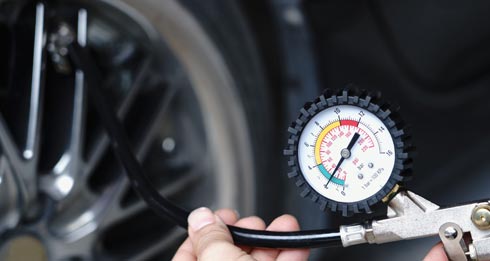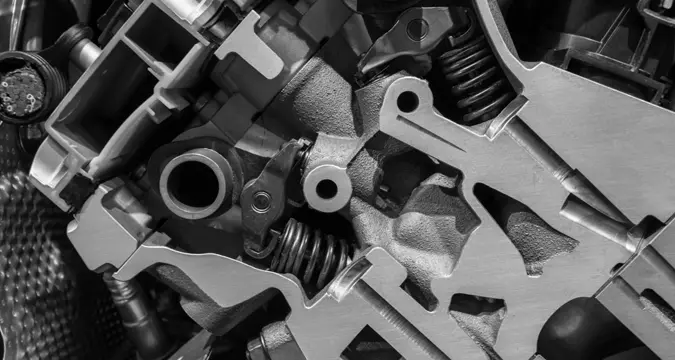Is your motorcycle not running as smoothly as it used to?
Many factors can cause a decrease in compression on a motorcycle, but luckily it’s usually an easy problem to fix. In this article, we’ll walk you through the basics of how to diagnose and repair low compression on your bike.
With the right tools and a bit of know-how, you can quickly fix low compression on your own. And once you’ve got things running smoothly again, you’ll be able to enjoy those weekend rides without worrying about your bike’s performance.
Check out our article on how to fix low compression on a motorcycle.
What Causes Low Compression?

Motorcycles aren’t complicated machines, but even the best bikes can cause issues. If your compression is low, you might have one of these problems:
Bent Valves
Bent valves are probably the most common problem. You’ll usually know if this is what’s wrong because you’ll hear a rattling noise coming from the engine when you start it up.
Worn-out Valves
If your valves are worn, they won’t open and shut smoothly. They’ll also usually be really noisy when the engine is running.
Weak Valve Springs
The main job of a valve spring is to close the valves tightly during each piston stroke. If they’re weak, they won’t be able to do that, and that will lead to low compression.
Worn-out Piston Rings
Worn-out piston rings can cause an increase in oil consumption because they allow oil into the combustion chamber. They’ll also make your engine lose power and sound different when you ride it.
If you think one or more of those issues is what’s causing low compression on your motorcycle, it’s time to get to work!
How Do You Diagnose and Fix Low Compression?

Here’s how you can determine whether or not your compression is low and figure out what the problem might be.
Before you start working on your motorcycle, it’s best to be certain that there aren’t any major problems with your engine. Make sure both the oil level and air filter are correct since those are things that can cause your bike to run poorly.
You should also check the spark plug for issues. If it’s been a while since you’ve replaced it, or if there is carbon buildup on the insulator, that might be why your compression is low.
Once you’ve checked all of those important things and still think you have a problem with your compression, you can continue with the steps.
Step 1: Locate the Leak
This step sounds simple. Unfortunately, a few things could be causing low compression on your motorcycle. And locating the exact point of the issue might take some time.
Here are all of the possible leaks you’ll need to check for:
Cracked Head Gasket
This is probably one of the most common causes of low compression. A cracked head gasket is exactly what it sounds like: a crack in the metal seal between your engine head and cylinder.
A cracked head gasket can be quite serious, so it’s best to start by checking for this type of leak yourself. If you don’t want to do that, see if your motorcycle is still covered under warranty.
If it is, take it back to where you bought it and ask them to check for this type of leak for you.
Loose Cylinder Head Nuts
A common reason why compression might be low on your motorcycle is that one or more nuts holding the cylinder in place are loose. Make sure all of these nuts are tight and that there is no play in the cylinder.
Step 2: Change the Piston Rings
After checking, if you don’t find any leaks, it’s probably time to check your piston rings. Here’s how to do that:
Remove the spark plug from your bike. Put a bit of motor oil on the end of the plug so you can check the compression.
Put your motorcycle on a stand and start it up. Let the engine run for a few minutes, then make sure to let it cool down properly before you take any other steps.
Take out the spark plug again and check how much oil is on it. If there’s quite a bit of oil, that’s a sign that the compression in your engine is low, and it’s probably time to change your piston rings.
Step 3: Check the Valves
Weak or worn-out valves can also cause low compression on a motorcycle. If you take off the cylinder head cover for your bike, check each valve one by one. Do this by removing them with a screwdriver or opening them using a special valve tester tool.
If you see residue on the thread for each valve, it’s likely that your compression is low because of worn-out valves. If this happens, you’ll probably need to change your valves as well as the piston rings.
Step 4: Check for Other Signs of Low Compression
A few other signs can indicate that your compression is low. These include:
ü Running issues like sputtering, misfiring, and backfiring.
ü The engine overheated while idling or not cooling down when revved.
ü Engine knocking while idling and smoking from the muffler.
By checking all of these things, you should have a better understanding of what might be causing your motorcycle’s low compression.
If it’s because of a leak, you might be able to fix it yourself. But if not, you’ll need to take your bike in for professional help.
Low Compression: Preventing It From Happening Again
While it may be annoying to find out that your motorcycle has low compression, you can prevent this problem from happening again in the future.
- Get your bike maintained regularly.
- Don’t ride it at high speeds for a longer period.
- Check the compression after every 20 hours of riding.
- Don’t let the engine idle for longer than necessary.
- Perform an oil change every 3000 miles or three months.
- Only use premium gasoline to prevent low compression problems.
- Avoid carrying heavy loads when riding your bike.
- If you have a four-stroke engine, use oil that’s specifically designed for this type of bike.
If you take care of your motorcycle in this manner, it should be able to continue providing you with good service for many years.
Conclusion
Motorcycle compression problems can be frustrating, but they’re usually easy to fix. By following the tips in this article, you should be able to diagnose and repair the problem yourself or take your bike in for professional help. Regular maintenance and a few simple prevention tips will help keep your motorcycle running smoothly for years to come. Thanks for reading.

